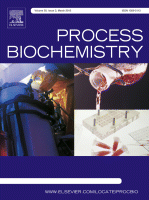Highlights
- OFFGEL-nLC-MALDI-TOF/TOF is a powerful tool to characterize complex hydrolysate.
- Tilapia hydrolysate was mainly composed of polypeptides and oligopeptides.
- 1374 peptides were identified by mass spectrometry from Tilapia hydrolysate.
- Tilapia hydrolysate exhibits antimicrobial activity against Yersinia ruckeri.
Abstract
We investigated the molecular characterization of a Tilapia by-product hydrolysate to asses its nutritional potential in aquafeed. The proximate composition and amino acid composition showed that the hydrolysate had high protein content and contained all the essential amino acids required for carnivorous fish nutrition. The molecular weight profile determined by High Performance Size Exclusion Chromatography (HPSEC) indicated that the hydrolysate was mainly composed of polypeptides (46.9%) and oligopeptides (35.8%). We also characterized the peptide fraction by nLC-ESI-MS/MS and OFFGEL-nLC-MALDI-TOF/TOF. We identified 1374 peptides, and highlighted a high diversity of oligopeptides and polypeptides. Finally, the Tilapia by-product hydrolysate exhibited antimicrobial activity against Yersinia ruckeri and to a lesser extent against Edwardsiella tarda and Bacillus megaterium. These preliminary results suggest the strong nutritional and functional potential of Tilapia by-product hydrolysates.

